When the EOS R came out, there weren’t many options for lenses.
But Canon has made a concerted effort to produce a full line of lenses, and now third-party manufacturers are making RF-compatible lenses.
It’s a beautiful system, and you can’t go wrong with the R, but which lenses produce the best results?
Here’s a look at my top picks for the best lenses with the EOS R.
This L-series “luxury” lens strikes all the right notes to make the perfect companion to your full-frame EOS R. While the f/4.0 aperture may not seem that fast when coupled with this versatile focal length range, it pairs to make one of my all-time favorite L-series lenses.
It’s perfect for me because it has everything I value in just the right proportions.
It’s got stunning image quality. It’s not enormous or heavy; You wouldn’t mind carrying this lens all day long.
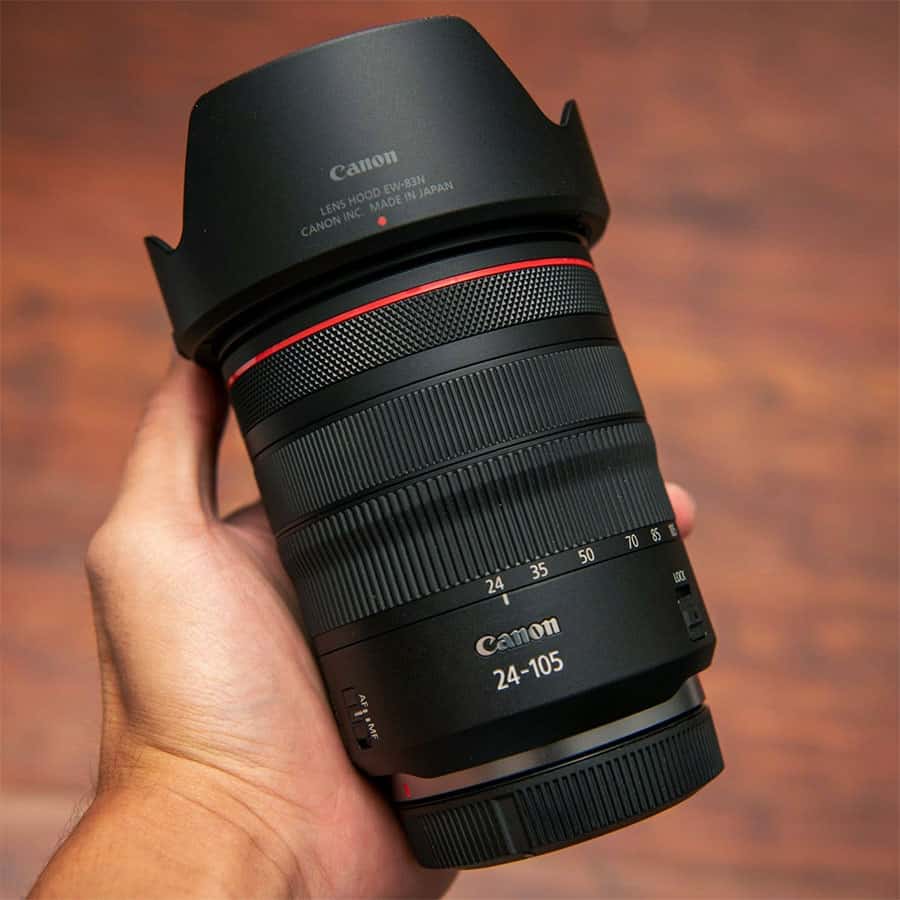
It’s not as expensive as some L-series glass, even though it doesn’t come cheap. It’s got a stellar IS and autofocus system.
In short, there’s not much this lens doesn’t do. It seldom leaves my camera.
The RF version of this classic lens has Canon’s newest Nano-USM drive motors, which are whisper quiet and smooth for video shooters.
And like other RF lens designs, it features a multifunction control ring that you can use for aperture or other features.
This lens is pretty big by “kit lens” or walk-around standards, especially on the lighter EOR R Body.
It weighs 1.54 pounds and is 4.22 inches long; it takes 77-millimeter screw-on filters.
Need to get up close and personal with your subject?
If you’re moving up to the EOS R from an APS-C camera, you might be surprised at the lack of reach your lenses have without the beneficial crop factor.
Most photographers are used to have a lens that goes well above 100 mm, and that might mean an extra-long lens for a full-frame sensor.
The premium lens for the job is the Canon RF 70-200 mm f/2.8L.
This is a gorgeous lens, based on an old EF design but much improved.
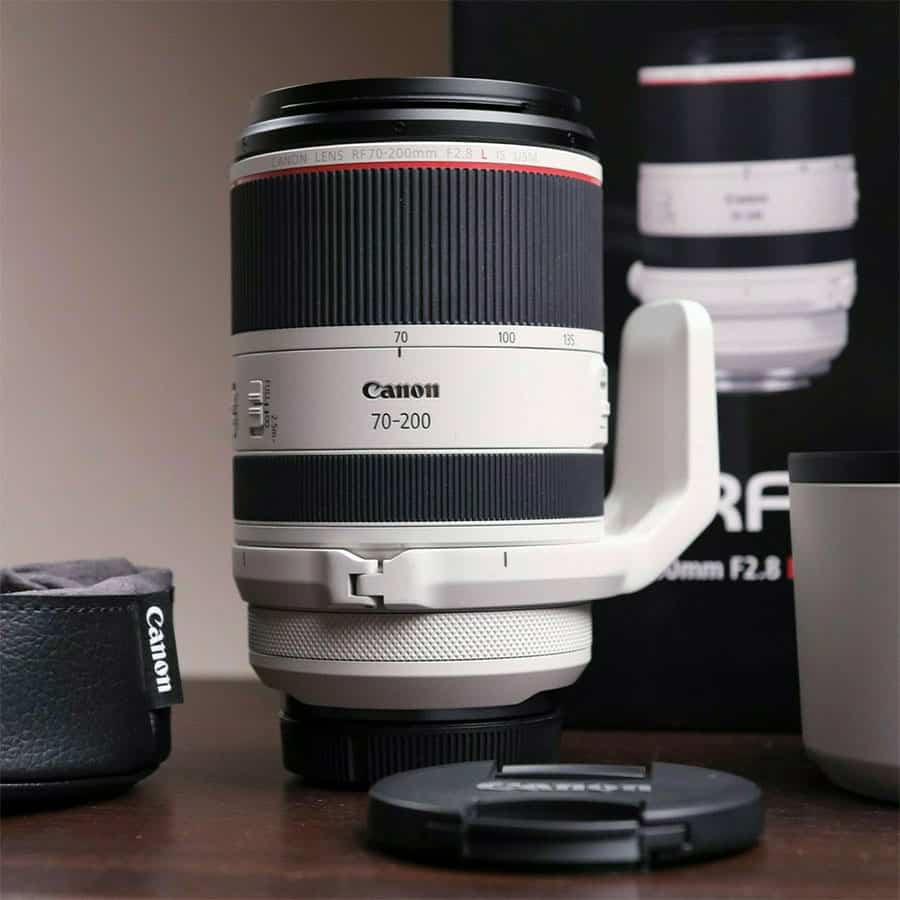
The new RF version is smaller and lighter than the old one, with an extending barrel that saves space in your camera bag.
It’s still hefty, though, at 2.36 pounds and 5.75 inches long. You can shave considerable weight and cost off by opting for the f/4 version of the same lens with the Canon RF 70-200 mm f/4L IS USM lens.
There are also options available if you need a little more reach, like the Canon RF 100-500 mm f/4.5-7.1L IS USM.
Canon makes two different nifty-fifty lenses for the RF mount, but my vote goes to the f/1.8 STM version.
At under $200, it’s thrifty as well as nifty, a must-have prime lens in the RF lineup.
It’s also tiny, measuring only 1.6 inches long and 0.35 pounds. If you put this on your EOS R, you’ll hardly know it’s there!
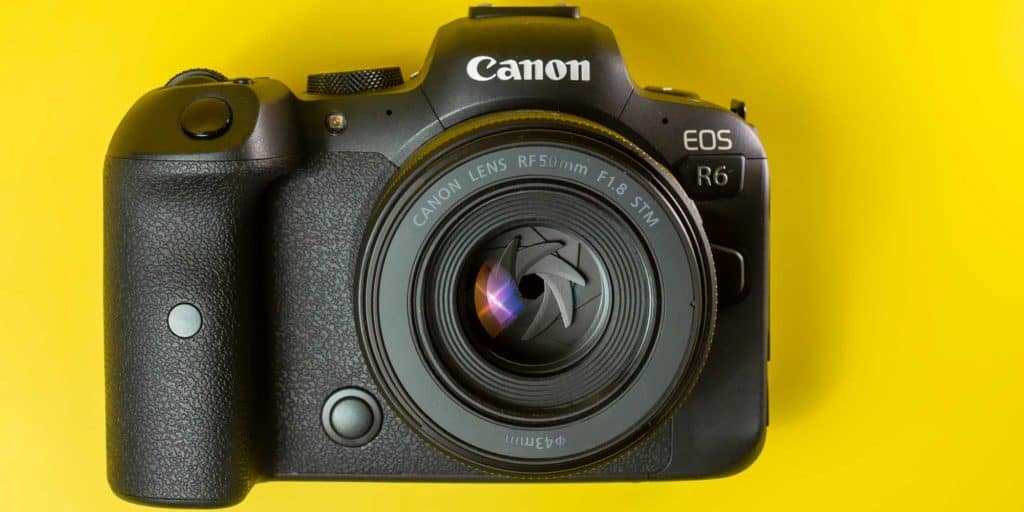
F/1.8 lenses are great values, and I appreciate that Canon has made this one for the EOS R-series.
If you need something faster, the RF 50 mm f/1.2L is your target.
You’ll quickly ask yourself how much that extra few f-stops are worth to you when you see the price. It’s ten times the price of the f/1.8.
Many portrait photographers like to use a fast 85 mm prime for the job.
These are usually labeled “short telephotos,” and they have a fantastic ability to produce stunning bokeh and excellent separation of your subject from their background.
Canon makes two RF-mount 85 mm primes, both built off of an f/1.2 aperture and both L-series.
One has an added Defocus Smoothing (DS) coating that produces even better bokeh.
But both L lenses cost over $2,000, with the DS version coming in just shy of $3,000.
For under $700, you can pick up a new copy of the latest version autofocus 85 mm portrait prime by Rokinon.
It’s weather-sealed, makes sharp pictures, and has fast autofocus.
It also makes a creamy bokeh that will never make you regret your choices.
The only question to ask is, what exactly are you going to do with your extra $2,000?
Like its mate the RF 50 mm f/1.8, the 35 mm is a lightweight, easy-to-carry lens that delivers on price point and image performance. It has the bonus of being a macro lens.
This lens has image quality and a focus system that is always surprising to people. It’s fast and sharp.
I like using a 35 mm prime as a walk-around lens, so this lens suits me very well.
If you like the functionality of the RF 24-105 mm f/4L, but you’d like something less expensive or smaller, check out Canon’s latest kit lens for their R-series cameras.
It shares the same focal length range but ditches the constant aperture in favor of affordability and compactness.
It weighs in at about half of the L-series lens at 0.87 pounds and is only 3.5 inches long. Plus, it takes smaller and less expensive 67 mm filters. All of these design savings also reduce the cost to about a third of the price of the L-series.
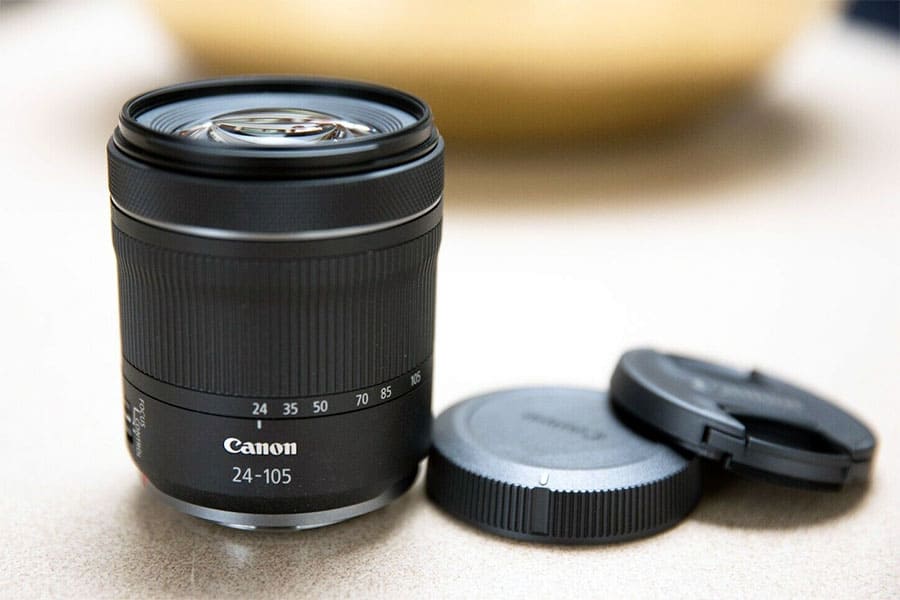
For all of these attractive savings, you’d think the lens would lose sharpness or quality.
But surprisingly, it’s a fantastic lens. Of course, it doesn’t have the same weather-sealing or robust construction that the L-series version has, but it’s more than hardy enough for travel photography and regular walk-around use with the EOS R.
It feels much more balanced on the small R-series camera bodies than the front-heavy L-series glass, too.
The only negative to this lens is the obvious one–it lacks a constant wide aperture. At 105 mm, this lens is an f/7.1 lens. Portrait photographers might be a bit disappointed with this when doing closeups, but it can still produce a pleasant bokeh even under these conditions.
Landscape and most other photographers will likely never notice, especially since they still have f/4 available at the widest focal lengths.
All-in-one lenses mean different things to different photographers.
From a marketing perspective, these lenses usually have focal length ranges covering everything from wide-angle to super-telephoto.
The Canon version of this lens is the RF 24-240 mm f/4-6.3.
This is a basic kit lens for people looking for one lens that can do everything, from landscapes to distant wildlife.
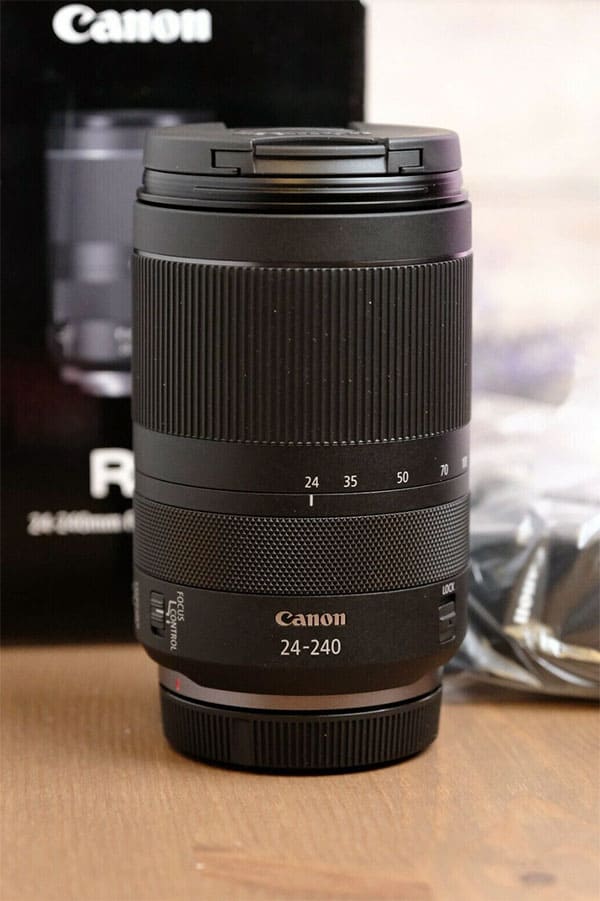
However, this lens’s problem is that it doesn’t do any of these things exceptionally well. It relies on the camera to correct some of the optical problems it has, which is sufficient for photographers who shoot in JPEG mode.
If you like to use RAW mode on your eos r, you’ll need to set up a lens profile to automatically correct the vignetting and distortion this lens produces at 24 mm.
Even with these problems, it’s important not to lose focus on the positives. This is a great size lens that could replace nearly everything in your camera bag.
If you’re going on a long trip, need to pack light, and want to be able to do it all, this might be an excellent lens to take.
Like the 85 mm, Rokinon and Samyang both make wide-angle lenses that are affordable and fast.
And also like the 85, the new wide-angle lenses are weather-sealed and have autofocus.
There are fisheye wide angles and various other focal lengths.
If there’s one trick to using these Rokinon or Samyang lenses, it’s to make sure that the lens’s firmware version is compatible with the camera you’re shooting.
The lens companies both sell a USB dock for this lens, and it’s handy to have.
Not only can you update the firmware for the newest camera bodies, but you can also program and fine-tune the lens.
Canon EOS R Lens Guide and FAQ
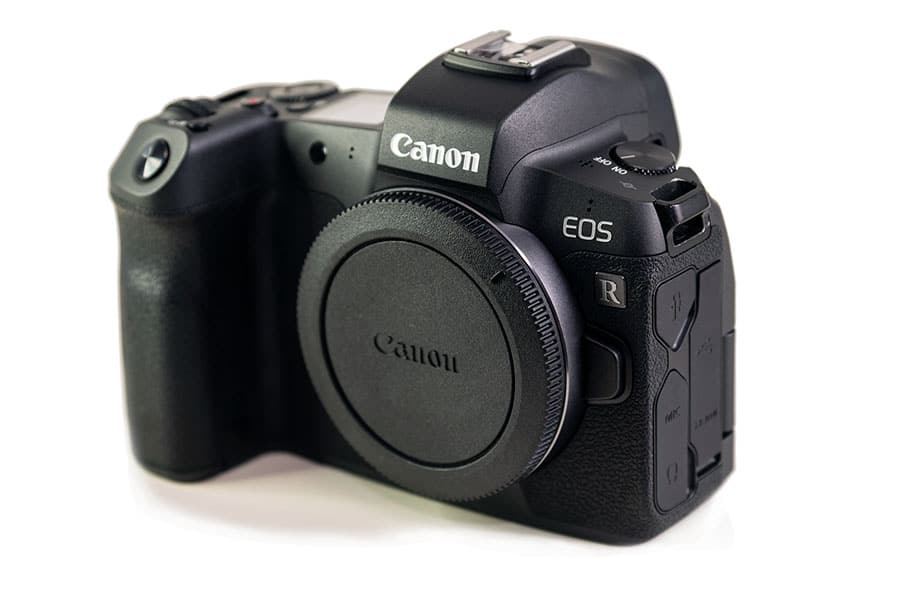
RF Lenses VS EF ?
The Canon EOS R camera is the first full-frame mirrorless body that Canon has produced. It’s a long-awaited addition to the Canon lineup, after several years of dabbling with the EOS M, a cropped-sensor mirrorless system.
Canon made the important choice to design an entirely new lens mount with their EOS R cameras, now known as the RF-mount.
Canon RF lenses have a wider bayonet mount than older types of lenses.
This allows better coverage of the sensor, which is much closer to the lens elements than previous SLR cameras.
Legacy Canon lenses that are designed for SLR use have EF mounts. These lenses can be adapted to be used on the EOS R with a simple adapter.
But adapting an older lens might not be the best choice.
For one thing, the lens will be larger and heavier.
You won’t get the benefit of the new lens bayonet design, which is much wider than the old lenses.
And finally, the older lenses have a more basic communication system for the autofocus and optical image stabilization system. New RF lenses feature a 12-pin electronic contact for fast and accurate systems communication.
The only Canon lenses that you cannot use are those designed for a camera with a smaller sensor.
So, while an EF-S lens might fit your adapter, it will not work with your EOS R full-frame camera. Likewise, an M-mount lens will not fit and will not function.
What are Canon L-Series Lenses?
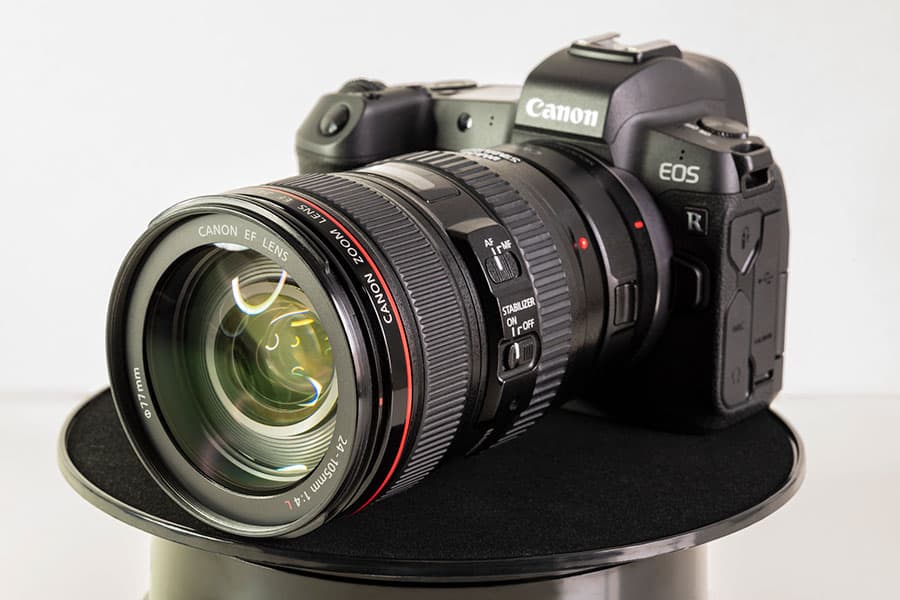
All camera manufacturers make a range of lenses for their customers.
There are simple “kit” lenses that come with the camera, usually consumer-grade and of the lowest quality.
There is usually a premium product to match. In the Canon naming scheme, the premium lenses are called “L-series.” The L stands for “luxury.”
What makes a lens luxurious? For one thing, L-series lenses are real pleasures to use.
They focus quickly, silently, and accurately. They are heavy because they are built exceptionally well, with metal barrels and sturdy components. Canon weather-seals them for protection from dust and moisture.
And they also have fantastic optics with cutting-edge features that professional photographers are looking for.
The real question you might be asking is, are the Canon L-series lenses worth the price?
That’s a more challenging question to answer because a lot more of that is opinion–one based on the photographer, not the equipment.
There are certainly negatives to the L-series lenses, and the price is only the beginning.
No one can fault their optical quality or construction, but these things culminate in a big and bulky lens.
Not everyone wants to carry such an item around with them all day. Even on full-frame cameras, occasionally, you want a “going to town” or a “walk-around” lens.
If you’re working professionally and in challenging conditions, then an L-series lens is for you.
These lenses will have the fastest apertures that Canon makes, which is excellent for difficult lighting conditions.
But their entry-level lenses are good too. If you place a value on having a smaller camera and lens package to carry around, Look at the entire lens lineup to find options that better suit your needs.
I will note one last thing about Canon L-series lenses: they hold their value exceptionally well.
Professional photographers are notorious for trading their gear and cycling through different equipment as their needs change.
There’s a huge secondary market for premium photography gear, and L-series lenses are some of the most in-demand items.
When you buy a second-hand entry-level lens, you don’t know what you’re going to get.
Everyday bumps and shakes and damage these lenses. But if you get a second-hand L-series lens, you can be assured that it was probably treated pretty well and likely has plenty of life left in it.
For the initial purchaser, that means you can charge a premium when you go to sell it.
Picking the Right Lens Focal Lengths
The starting point for picking a lens for your EOS R is always the focal length.
The focal length is how large the field of view is. On a full-frame camera like the EOS R, there’s no need to worry about crop factors as you do on some other cameras.
In other words, when you buy a 50 mm lens, you are going to get a 50 mm lens.
In the world of lenses, 50 mm is an important reference point.
A 50 mm focal length lens has a field of view that is roughly equivalent to the way that our eyes perceive the world. That means that it will produce a lens with the least distortion that is the closest to how the world looks. It is neither zoomed out nor zoomed in.
If a lens has a focal length of less than 50 mm, then it’s zoomed out and called a “wide-angle lens.” Lenses can be just slightly wide or so wide that an entire 180-degree circle is projected into your image.
The wider the field of view, the lower the focal length in millimeters, and the greater the image is distorted. A 180-degree fisheye perspective lens has roughly an 8 mm focal length. The most popular focal lengths for wide-angle lenses are 24, 28, and 35 millimeters.
If you get a lens with more than 50 mm, it is zoomed in and called a telephoto lens. The longer the focal length in millimeters, the more telescope-like the images you can get.
The most common telephoto. focal lengths are 85, 100, 135, and 200 mm. Lenses more than 200 mm are used for special purpose applications, like sports or bird photography.
Changing the focal length of your lens does more than just change the field of view. It also changes the image’s perspective, making the relationship of objects in the background and foreground change.
Wide-angle lenses tend to separate things from their backgrounds, while telephotos make objects in the background seem closer.
Making Sense of Lens Apertures
The second component of great importance when choosing a lens is the aperture. The aperture is the element of the lens that opens and closes like the iris of your eye.
By opening it wide, it lets more light in.
This is useful in a few situations, one of which is photography in low-light conditions. The wider the aperture, the better the lens is in dimly lit situations.
Wide-aperture lenses are called “fast” lenses because they enable the use of faster shutter speeds.
Making lenses with a wide aperture is a design limitation. You can only fit so much glass into a lens barrel.
Everything gets much heavier and much more expensive if you start making everything bigger to fit bigger pieces of glass.
For this reason, the most apparent factor that separates inexpensive lenses from premium examples is the width of the aperture.
The aperture of a lens is measured in f-stops. The fastest, best-quality zoom lenses from Canon have f-stops of f/2 or f/2.8. Prime lenses can be faster, with the fastest one Canon makes being the RF 50 mm f/1.2L.
Another way the manufacturers can save money on zoom lenses is by making a variable aperture lens.
The best zooms will hold the same aperture from its widest setting to the most telephoto setting. For example, the RF 24-104 mm f/4L has the same f/4 aperture at either 24 or 105 mm.
Alternatively, the RF 24-105 f/4-7.1 lens has the same focal length range but allows the aperture to change as you zoom in.
At 24 mm, it has f/4, but the aperture progressively gets smaller as you zoom in until it is f/7.1 at 105 mm. An aperture of f/7.1 isn’t very fast, so this lens is much less expensive than the f/4L counterpart.
I would be remiss if I did not mention that aperture is about more than just letting in more light.
It also controls the depth of field of an image. A small f-stop will produce a narrow depth of field.
This look is commonly associated with portraits, where the subject is sharply in focus while the background is blurred.
Portrait photographers call this background blur bokeh, and they will pay a high premium for fast lenses with pleasant bokeh.
Are Prime or Zoom Lenses Better for the Canon EOS R?
A zoom lens is one whose focal length can be changed, one that the photographer can zoom in or out with.
On the other hand, a prime lens is one that you cannot change.
The photographer either needs to put on a different lens or move closer to the subject to zoom in.
Moving closer to the subject isn’t always possible. And if the photographer is explicitly looking for the different look of a longer lens, they may be out of luck.
The choice of whether or not to shoot with zoom lenses is a personal stylistic choice.
Prime lenses have quite a few advantages over zoom lenses, but they all come down to the photographer and how they like to shoot.
Prime lenses are faster, smaller, and lighter than zoom lenses.
They are also less expensive when you compare similar focal lengths and apertures. Finally, prime lenses are often optically superior to zooms.
The maker can perfectly design the optics for one focal length instead of compromising the design to allow for use over many focal lengths.
I use prime lenses on two occasions–when I need something inexpensive or when I need something small.
There are some focal lengths that I do not use frequently enough to warrant spending a lot of money on. The perfect example is an ultra-wide-angle lens, like my 8 mm fisheye or my 20 mm landscape lens.
I love these lenses, but neither one is worth spending a lot of cash on. I was able to buy these two lenses relatively cheaply since they are both primes.
They meet my needs just fine, and since I don’t use them very often, I consider it money well spent.
The other time I think primes are useful is for getting something tiny that makes my camera small and inconspicuous.
This has always been the great thing about using 50 mm lenses, widely known as “nifty-fifties” because they’re small, inexpensive, and get great results.
I like keeping a low-profile 35 mm on my camera for hiking trips and city explorations. It tucks in my bag neatly and doesn’t break my back carrying it around.
Putting It All Together--Picking the Right Lens
In some ways, picking the lens to put on your EOS R is more challenging than picking the camera.
The EOS R is an excellent package with a lot of potential. On the one hand, though, you are limited in your lens choices since the RF mount has just come out. As the years pass, you’ll have more and more choices for lenses to put on the camera.
All lenses come down to a balancing act. You need to find the right chords to strike that fit your needs.
Budget, size, weight, focal length, aperture, and quality all weigh in your decision.
No guide can help you beyond understanding the factors involved because every photographer will put more emphasis on one factor over another.
While one photographer might value the absolute best image quality or fastest aperture, another might prefer a smaller and cheaper lens. The choice is up to you.
Specifications & Resources
Canon EOS R Specifications
| Body type | |
|---|---|
| Body type | SLR-style mirrorless |
| Body material | Magnesium alloy |
| Sensor | |
| Max resolution | 6720 x 4480 |
| Other resolutions | 4176 x 2784 (1.6x crop) |
| Image ratio w:h | 1:1, 4:3, 3:2, 16:9 |
| Effective pixels | 30 megapixels |
| Sensor photo detectors | 32 megapixels |
| Sensor size | Full frame (36 x 24 mm) |
| Sensor type | CMOS |
| Color space | sRGB, Adobe RGB |
| Color filter array | Primary color filter |
| Image | |
| ISO | Auto, 100-40000 (expands to 50-102400) |
| Boosted ISO (minimum) | 50 |
| Boosted ISO (maximum) | 102400 |
| White balance presets | 6 |
| Custom white balance | Yes |
| Image stabilization | No |
| Uncompressed format | RAW |
| JPEG quality levels | Fine, normal |
| File format |
|
| Optics & Focus | |
| Autofocus |
|
| Autofocus assist lamp | Yes |
| Manual focus | Yes |
| Number of focus points | 5655 |
| Lens mount | Canon RF |
| Focal length multiplier | 1× |
| Screen / viewfinder | |
| Articulated LCD | Fully articulated |
| Screen size | 3.2″ |
| Screen dots | 2,100,000 |
| Touch screen | Yes |
| Screen type | TFT LCD |
| Live view | Yes |
| Viewfinder type | Electronic |
| Viewfinder coverage | 100% |
| Viewfinder magnification | 0.76× |
| Viewfinder resolution | 3,690,000 |
| Photography features | |
| Minimum shutter speed | 30 sec |
| Maximum shutter speed | 1/8000 sec |
| Exposure modes |
|
| Built-in flash | No |
| External flash | Yes (via hot shoe) |
| Flash X sync speed | 1/200 sec |
| Drive modes |
|
| Continuous drive | 8.0 fps |
| Self-timer | Yes (2 or 10 secs) |
| Metering modes |
|
| Exposure compensation | ±3 (at 1/3 EV, 1/2 EV steps) |
| AE Bracketing | ±3 (3 frames at 1/3 EV, 1/2 EV steps) |
| Videography features | |
| Format | MPEG-4, H.264 |
| Modes |
|
| Microphone | Stereo |
| Speaker | Mono |
| Storage | |
| Storage types | SD card (UHS-II supported) |
| Connectivity | |
| USB | USB 3.2 Gen 1 (5 GBit/sec) |
| USB charging | Yes (With some chargers) |
| HDMI | Yes (Mini-HDMI) |
| Microphone port | Yes |
| Headphone port | Yes |
| Wireless | Built-In |
| Wireless notes | 802.11b/g/n + Bluetooth 4.1 LE |
| Remote control | Yes (via smartphone) |
| Physical | |
| Environmentally sealed | Yes |
| Battery | Battery Pack |
| Battery description | LP-E6N lithium-ion battery & charger |
| Battery Life (CIPA) | 370 |
| Weight (inc. batteries) | 660 g (1.46 lb / 23.28 oz) |
| Dimensions | 136 x 98 x 84 mm (5.35 x 3.86 x 3.31″) |
| Other features | |
| Orientation sensor | Yes |
| GPS | None |
Conclusion
The EOS R is a gorgeously designed camera body that has so much potential.
There are plenty of lenses to keep you happy with the camera, but sorting through which one is right for you and your shooting requires a little thought.
Which RF lenses are you eagerly awaiting? Let me know in the comments below.

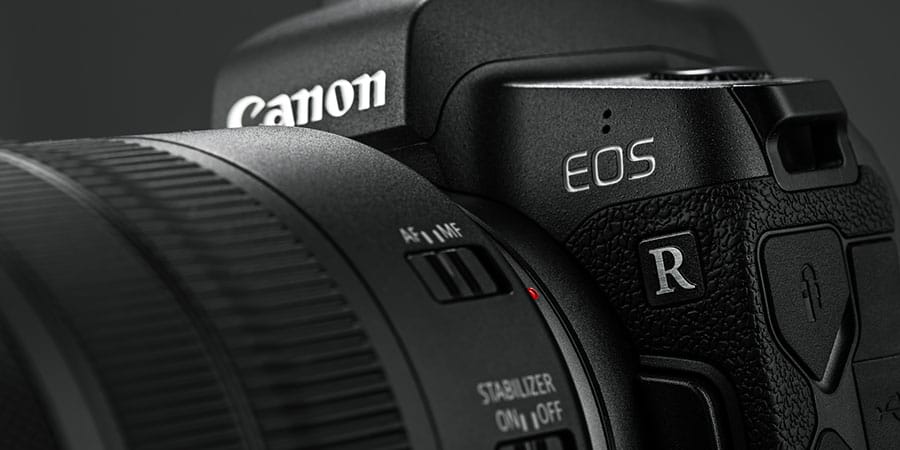
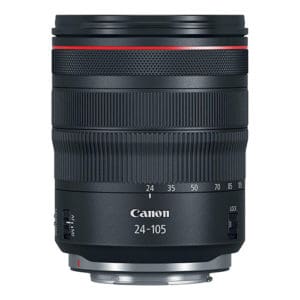

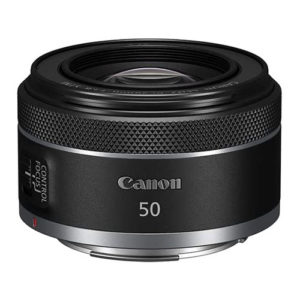
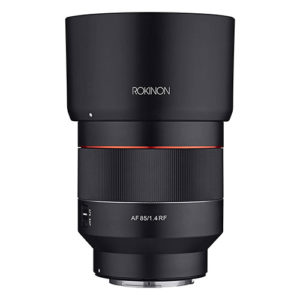
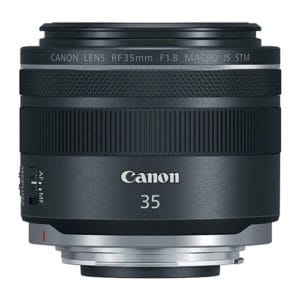

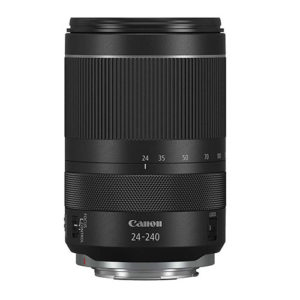


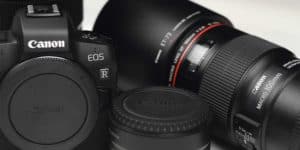
1 thought on “Top 8 Best RF Lenses for the Canon EOS R”
In your article about the best lenses for eos r , you said that ef-s lenses will fit the adapter, but will not work on my full frame r camera. This is not true. I use several ef-s lenses on my rp with the adapter all the time. Thanks for the helpful article otherwise.